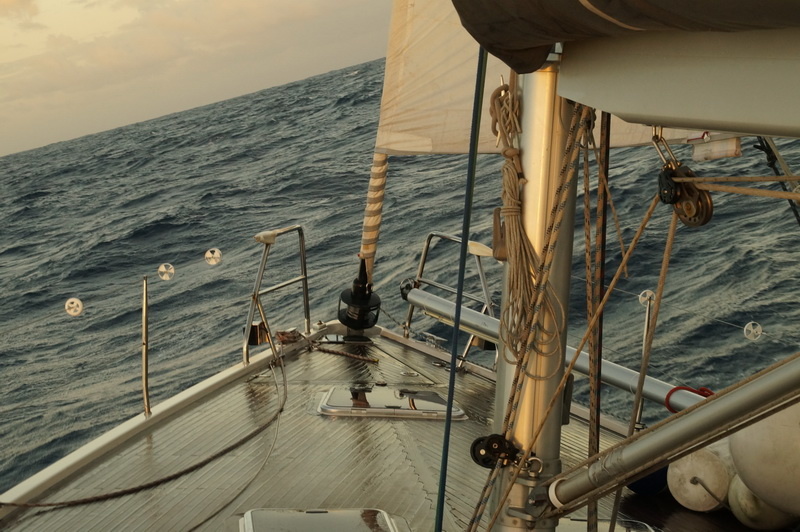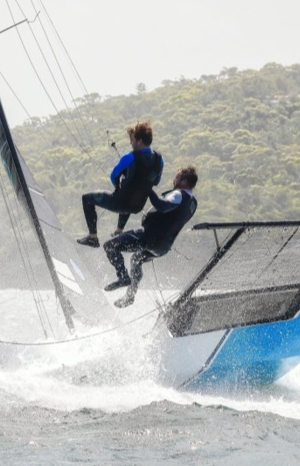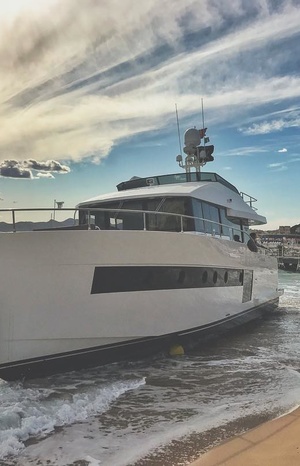Exactly one year ago, on May 20, 2013, at the crossing from the Galapagos Islands to the islands of French Polynesia in «Juliet», there was an accident: first the talrep of the windward cable could not stand, then the mast broke under the deck, began to heel towards the stern, and we had to drop it overboard. When we saw the tripods with a hacksaw in the middle of the ocean at night, it looked like we were drinking the bitch we were sitting on. In the morning, we got up a little bit and built emergency weapons, helping with the engine, and headed towards Easter Island.
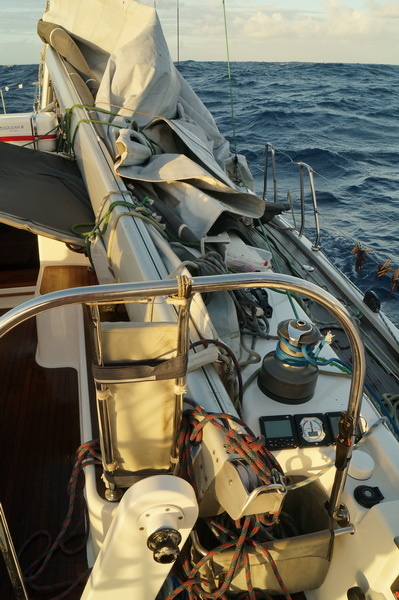
After two days, we were able to organize a refueling of «Juliette» by contacting the Chilean and Peruvian coastal services and sending a «World Swan II» forestry truck with 300 litres of diesel to the mid Pacific. At the same time, the feeling that life and our round-the-world voyage were still going on returned. Then there was the installation of temporary weapons on Easter Island and another 2,400 miles of transition to Tahiti, where we were to assemble and install a new mast ordered from mainland France. With the help of friends and members of our «Marine Practices» Club, all this was done.

A month ago, eight months after the accident, the insurance indemnity came to «Juliet»'s account, and now the story can be considered complete. Today Polina and I are going to fulfill our promise and tell as much detail as possible about how the repair was done, how much money we spent on it and how we got it back.
We also attach a very interesting document. This is a survey report from our insurance agent in French Polynesia. This is the main document on the basis of which our insurance company has decided to reimburse the cost of repairing «Juliette». Contact details have been removed from the report, otherwise it's authentic, including a fun kaleidoscope of photos).
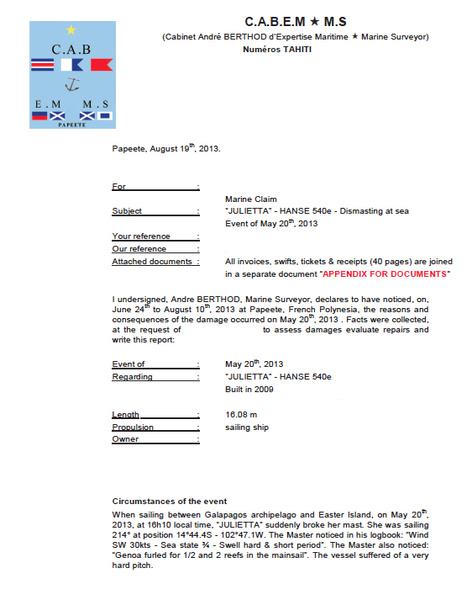
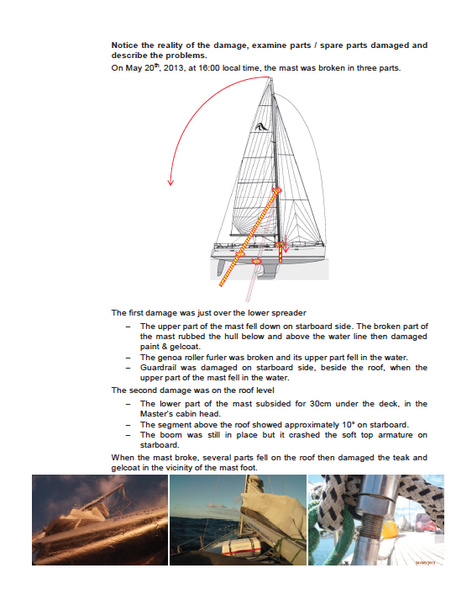
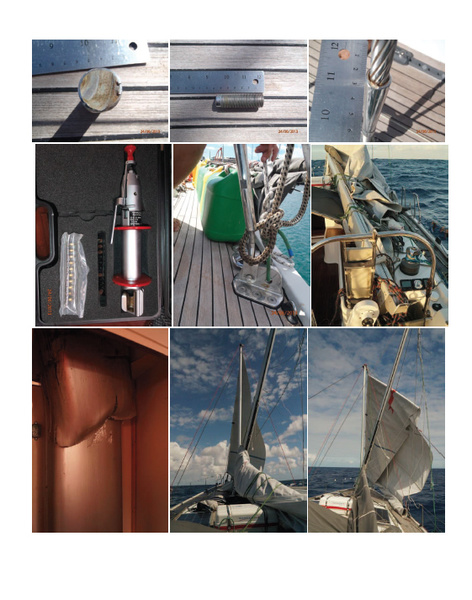
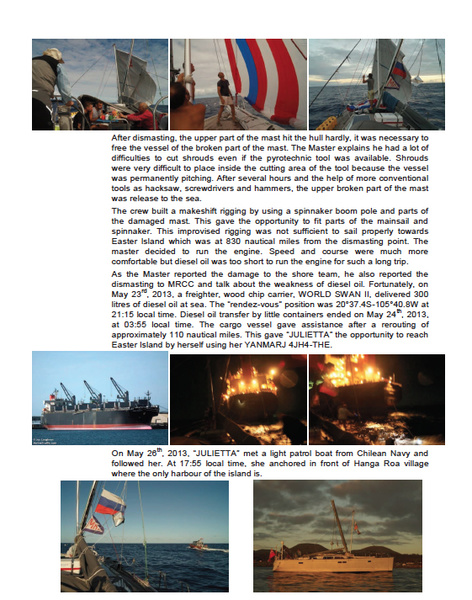
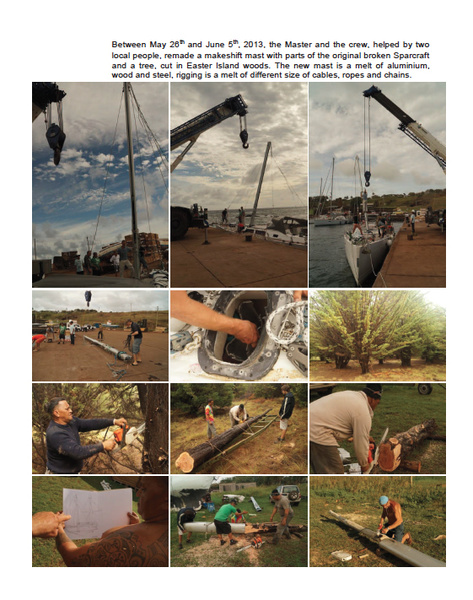
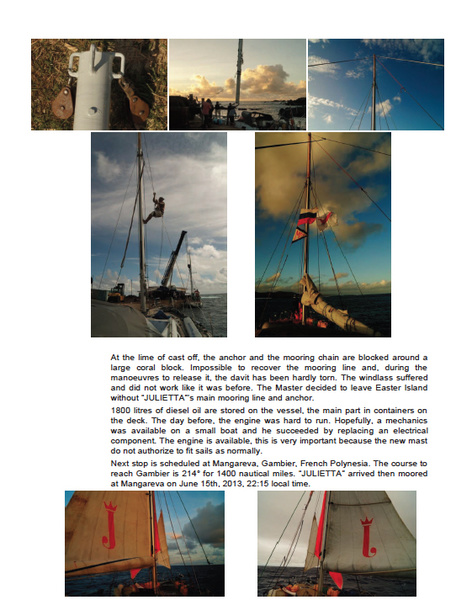
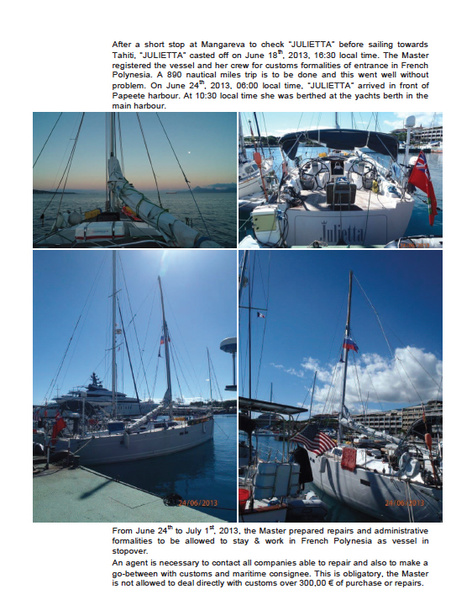
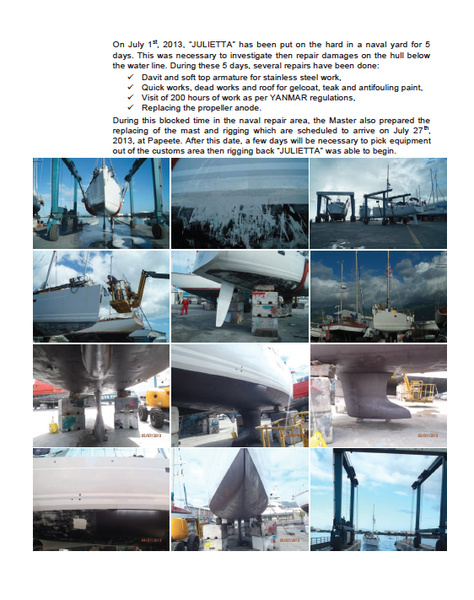
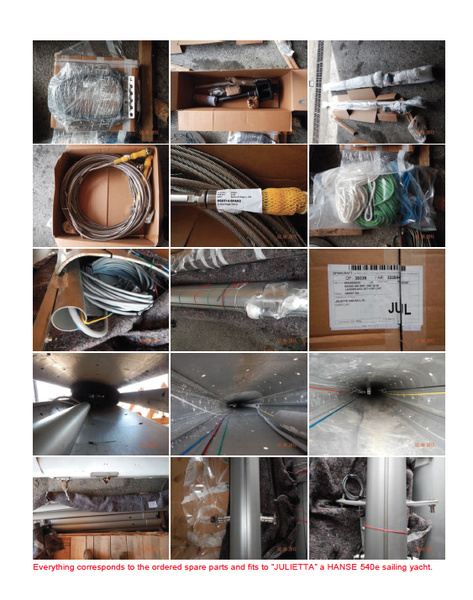
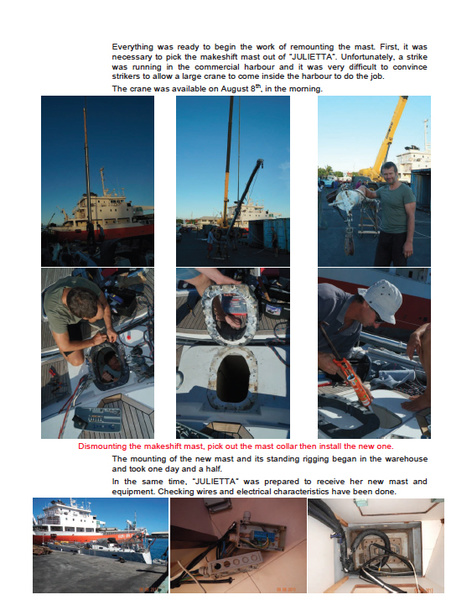
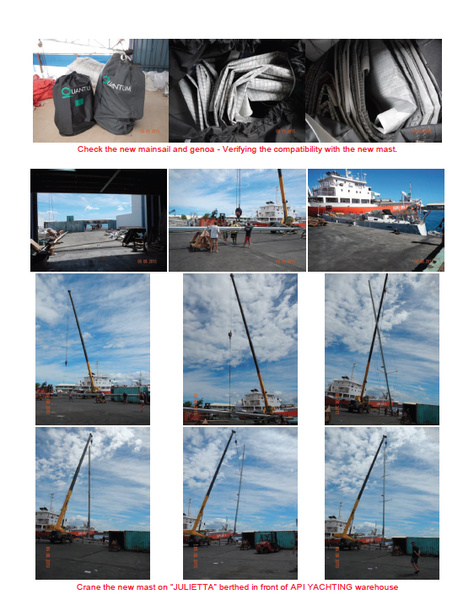


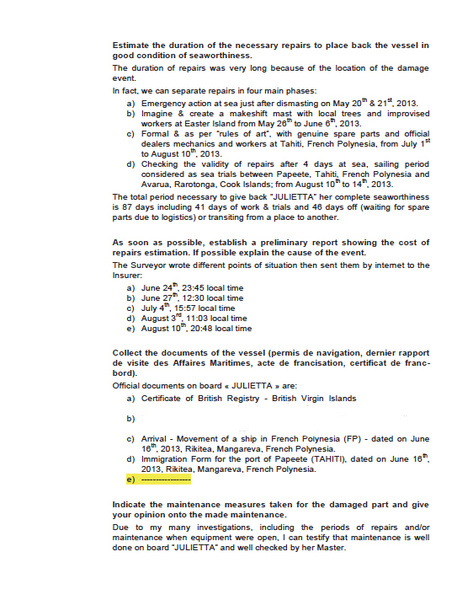
Working with a surveyor
Immediately after the accident, we contacted our insurance company - this is important. We talked about the accident and agreed on how we would proceed. To inspect the damage, the insurance company had to send a representative to us. The first port with this opportunity was the capital of French Polynesia on the island of Tahiti - Papeete. The day before we arrived at the port, we informed the insurance company of the exact time of arrival. Half an hour after mooring, Andre appeared in the marina - our surveyor, a great professional and human, our great luck.
The surveyor is an independent expert hired by an insurance company. He must give an opinion on the damage sustained by the ship and draw up an inspection report on the basis of which the insurance company compensates the damage.
The main task at the beginning of communication with the insurance company and the surveyor is to describe the accident as clearly and easily as possible. It is important to prove the truthfulness of your words.
Try not to forget to write down the time of the accident, the coordinates, the sea state during the accident. Be sure to take photographs of the breakdown. If you keep a logbook, make a detailed entry (in our case the blog seapractic.ru on the Internet helped).
After the boat was inspected by a surveyor, we made a list of damages and repairs - a defective list. It included: loss of mast, rigging, genoa, radar, antenna, animometer, broken visor, damaged teak deck and partition in the bow shower cabin. When the surveyor supported the idea of taking into account the repair of the anchorage damaged during the emergency parking off Easter Island, as well as the maintenance of the engine after a long transition, I was convinced that it is not only in the interest of the company, but also of ours.
Organization of the repair
We were looking for money and organizing purchases. Time went on, the repairs gained momentum, we had to catch up with the schedule. The help of friends turned out to be invaluable. In a short time we collected almost 90 thousand euros and ordered» new sailing equipment for «Juliet. The steamer with a 16 m long and 16000 kg box left France on June 29 and arrived in Tahiti through two oceans on August 2.
We used an agent to do the paperwork. Without him it is impossible in French Polynesia, for example, to carry out customs clearance of goods or to conclude contracts for repair work. It is also better to shop on the island through an agent, because he enjoys discounts.
Of course, the agent has to be paid, but as practice has shown, in the end you save both time and money.
It took five days to assemble the mast. According to the rules of the insurance company to install complex equipment (in our case - the mast) must be a certified specialist. In Tahiti, the Frenchman Christophe turned out to be a Sparcraft rank specialist. Unfortunately, Christophe has a complicated character, he hates agents, and agents hate him. But despite everything, we put the mast on August 7, and «Juliette» went out again on August 8 - 80 days after the accident.
Costs
So, the list of our major expenditures:
- Temporary armament on Easter Island-- $3,500;
- anchor repair - 1,400 euros;
- anchor and chain - about 1000 euros;
- mast and rigging - 25650 euros, their delivery to Tahiti - 13160 euros;
- genoa, 7,400 euros;
- VHF antenna and radar - 5000 euros, delivery - 1400 euros;
- set of epaulets and carriages Harken - 2600 euros, delivery - 400 euros;
- lift boats for damage inspection - 1050 euros;
- restoration of the hull and deck surfaces - 4200 euros;
- assembly and installation of the mast - 9000 euros.
In addition, this does not include the cost of repairing the visor, the leisy-jack, engine maintenance, agent work and customs fees for the delivered equipment. The total damage amounted to 86171 euros.
Three months later, in the middle of a clear sky, the bill for refueling came from the owner of the «World Swan II».
We were asked to pay for 0.3 tons of diesel fuel transferred to «Juliette»and 15 tons of fuel spent «by World Swan II» on the way to us. We paid 7,200 euros for the refueling.
The total amount we paid to the insurance company was 93371 euros.
The insurance company reimbursed us €88988, refusing to compensate for the out of date engine maintenance and the purchase of non-regulation cover for the boat, on the grounds that these costs are not related to the elimination of the accident. Nor did we compensate for the repair of the anchor winch, the anchor winch platform and the purchase of the anchor and chain. We were offered to arrange these costs as a separate insurance event, but the total costs in this case did not exceed the amount of the franchise - there was no point in initiating a new proceeding.
Registration of documents
Success in working with an insurance company largely depends on carefully collected and properly executed documents. If you want a full refund of the costs associated with repairing damage, it is important to keep all invoices and receipts issued to you confirming their payment. If payment is not made on behalf of the policyholder, it is important to provide a power of attorney signed by the payer indicating that they agree to replace the policyholder for expenses. Another power of attorney must also confirm the payer's consent to the reimbursement of the funds paid by the payer according to the policyholder's details.
In addition, you will be asked to provide documents proving your interest in the insured property (e.g. a certificate of ownership of a ship or a contract of sale) and the right to operate the ship.
You
will also be asked to write an explanatory note from the person who was driving
the ship at the time of the accident, describing the time, place, circumstances and reasons for the accident.Finally, it will be necessary to prepare an application for the payment of insurance compensation with the calculation of the amount of damage.
If you approach the «paperwork» with due care, you can count on the insurance company to make a decision in your favour.
Results of
Our case took 6 months and
was resolved
safely
on New Year's Eve.Unfortunately, the joy was overshadowed by the fact that the insurance company refused to work with us further.
Well, you can understand them: the mast, it turned out to be expensive...
But much more expensive than that is the help of our friends, members of the «Marine Practices»Club, who transferred money, flew to the other side of the Earth
and supported from the shore. «Juliette» continues to sail around the world.
Source: Seaside Practices website.

